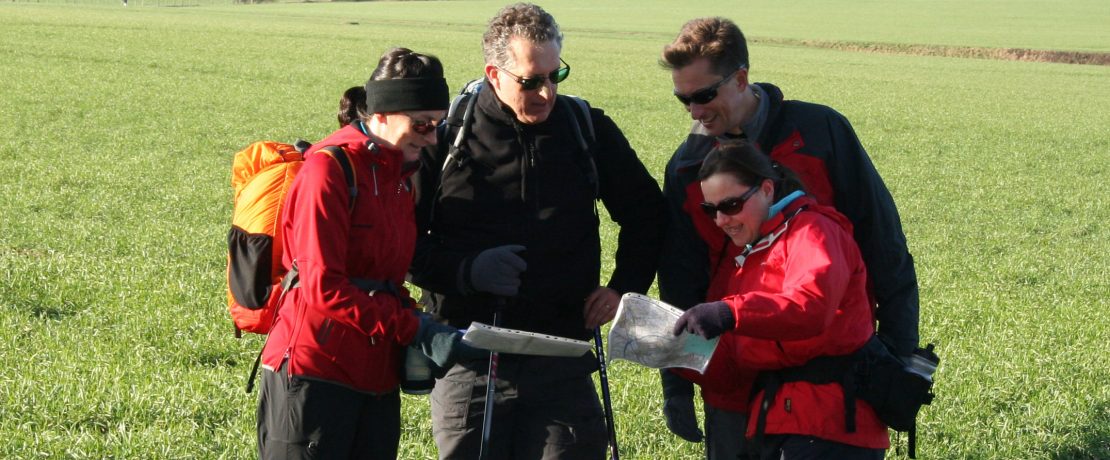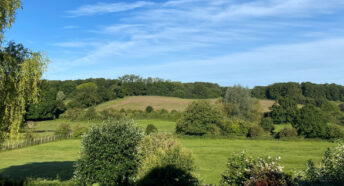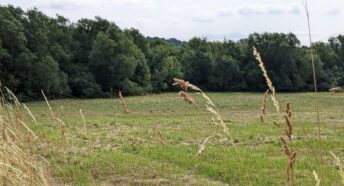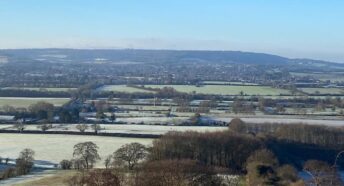Why is the Green Belt so important?
Today, about two thirds of the land in Hertfordshire is in the Green Belt and it is protected in law from inappropriate development.
But the Green Belt is at risk. There is immense pressure for building, and widespread proposals for damaging, large-scale development. In much of our campaign work we fight to uphold the protection of the Green Belt. But why is it so important?
Local communities care deeply
The Green Belt is not an abstract concept. It’s the countryside next door for many Hertfordshire residents. When it’s lost to development, access to their local countryside becomes more difficult. It’s important for many reasons, and local people and local communities care deeply about protecting it. Here’s why.
Space for recreation
The open countryside and woodlands comprising the Green Belt contain hundreds of Public Rights of Way including footpaths and bridleways. These are valued by local people for walking, running, mountain biking, dog-walking and horseback riding. Others go out with their phone or camera to photograph wildlife, and many of us simply use these rights of way to get out into the landscape and admire the view.
Boosts health and well-being
Mental and physical health and well-being are supported by spending time outdoors in green spaces. Spending time in nature can help clear the mind and improve our mood. A regular walking routine can help prevent heart disease and other chronic illness, reduce stress, and even boost the immune system.
Helps to mitigate climate change
Much of the Green Belt land area across Hertfordshire comprises agricultural land and woodlands. These green landscapes perform a vital function in our efforts to mitigate climate change, absorbing huge amounts of carbon from the atmosphere, over 10 million tonnes per annum across the UK.
Provides a home for wildlife
One-sixth of the UK’s wild species are at risk of extinction. The Green Belt provides habitats that are vital for their survival. This includes woodlands and hedgerows which provide nesting, feeding and breeding places for a huge variety of species, and chalk streams and other wet areas which provide habitats for fish, mammals like water voles and even otters, birds, wildflowers, insects such as dragonflies and damselflies, and amphibians such as frogs, toads and newts. And the Green Belt has huge potential to be managed even more with wildlife in mind, and so help stop biodiversity decline.
An important resource for food security
As mentioned above, much of the Green Belt in our county is agricultural land, used for growing food crops or for grazing animals. According to government data, the UK imported 46% of the food we consumed in 2021. Government strategy is to reduce these imports and become more self-sufficient. Keeping our agricultural land in food production is therefore crucial to improving our domestic food security.
Provides space for children to learn about nature and the environment
The benefits of young children engaging with the countryside have never been more important. Children’s mental, physical and emotional health and well-being are supported by being in nature. The countryside, nature and the environment are important components of the science curriculum and the teaching of climate change awareness. And the sheer joy on children’s faces when running around and playing outdoors is evident for all to see.
Prevents urban sprawl
The Green Belt was originally established as a means of preventing uncontrolled sprawling development. Today, Sir Andrew Motion, former Poet Laureate and a past President of CPRE, is a passionate defender of the Green Belt. He talks about the hideous sprawl of Los Angeles in America, and how without the Green Belt, London would now be the same size as Los Angeles and would sprawl all the way from Cambridge to Brighton.
For everyone
The Green Belt is a public resource. Although much of the land may be in private ownership, access to the countryside within the Green Belt is widely available for everyone. This is through hundreds of public rights of way, nature reserves, and formally designated local green spaces. It includes woodlands, historic common lands, sites of special scientific interest, village greens, and country parks.
Worth fighting for
For all of these reasons, we think it is vitally important that the Green Belt is protected and maintained for everyone’s benefit. We think it’s worth fighting for and we will keep on campaigning for it.
Please join us and help us to ensure it is still here for future generations. And please sign up below for our newsletter.
To learn more, read how the Green Belt was first established.








